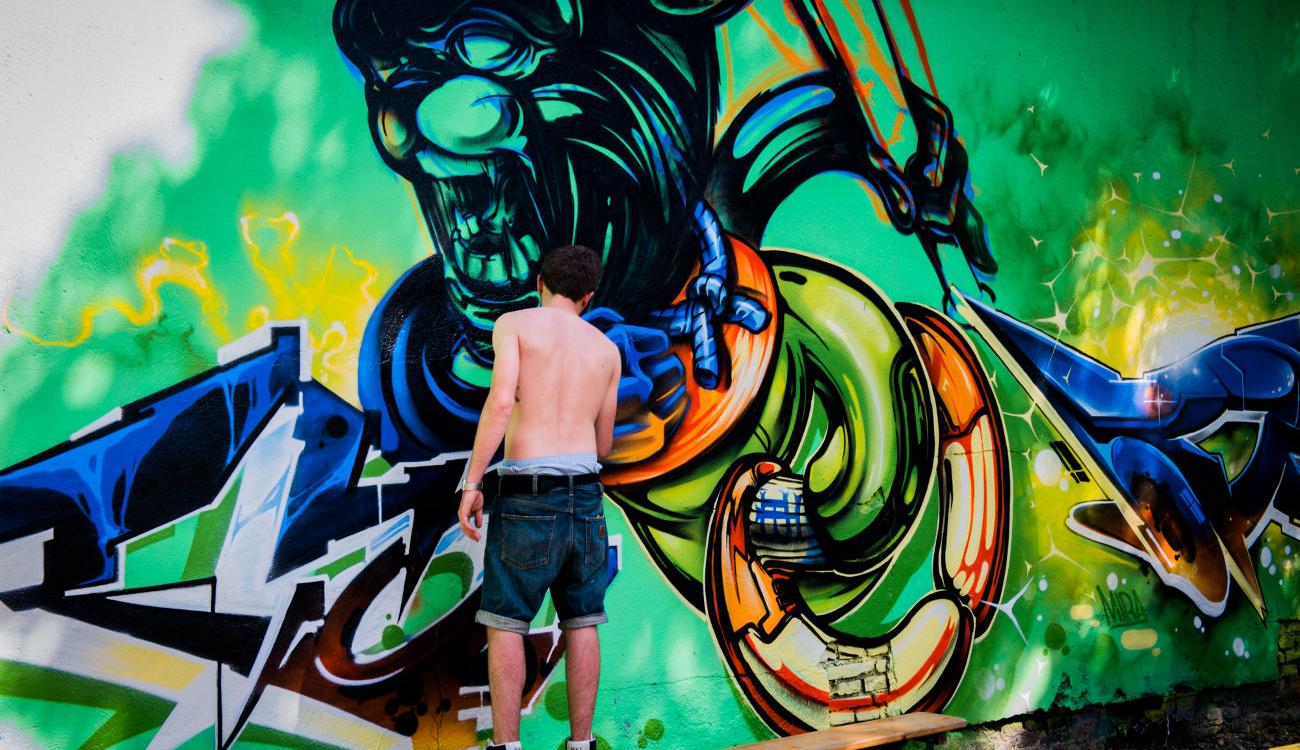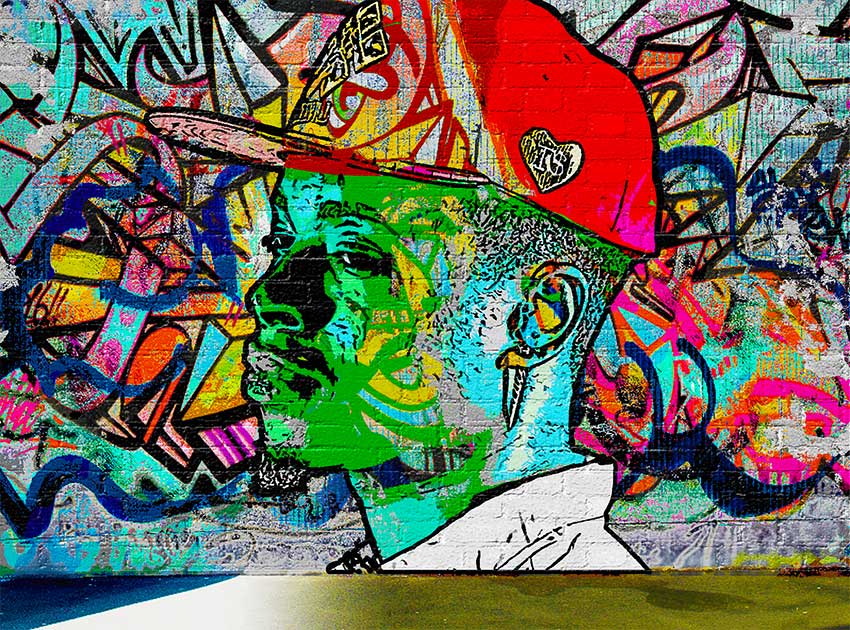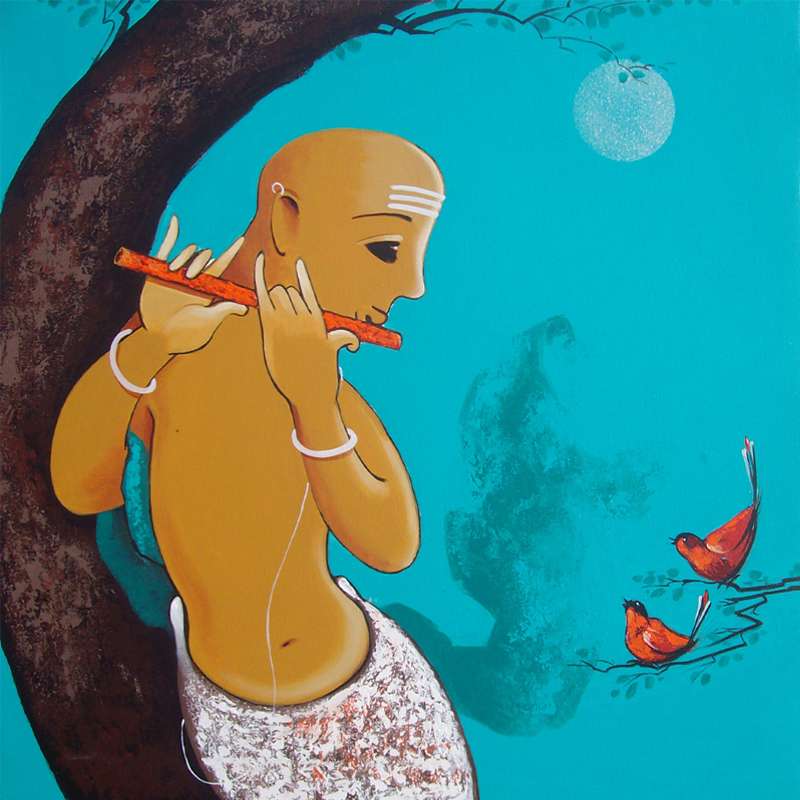
Ever encountered the street art on the sides of roads, at bus stops or wall spaces in your neighbourhood? What do you think it is?
While the cops are all determined to catch those who vandalise (in their opinion) the public property, there is a totally different side to this story that I am going to unfold today.
Many of art lovers speculate graffiti (a form of contemporary art that encourages the artists to paint the public spaces with meaningful and flashy designs) as a threat to both art and public places.
People do not like the idea of displaying artwork on such mediocre spaces. Art is considered as a way to describe emotions of artists and it is known to be done in the traditional manner; in closed rooms and on canvas, paper or other media.
There is a heated debate that goes with the origination of graffiti art. Quite a few people consider graffiti was introduced to the world as a reply to modernism and social division.
Especially in the 1970s, New York City saw the emergence of graffiti art a lot on the streets. The hide & seek between the graffiti artists that coloured the subways and the wall spaces in New York and the cops prevailed for almost two decades.
Other art admirers think that graffiti was prominent since the people used to sketch the wall spaces of caves. Well, I will be leaving that debate for some other time.
In this blog, we are going to converge our focus on whether graffiti should be considered as a legitimate form of art or as a vandalism.
Let’s start:
What is Graffiti?

It is the language of the rebels. People who run parallel with the conventional course of art draw graffiti.
These are some of the views on graffiti.
Graffiti is the patterns, paintings, writings or forms of design that are scribbled, sketched or coloured on a wall or any space. These wall space are public properties and hence graffiti is done to convey society some kind of message.
Artists around the world have a scattered thought process on how graffiti should be treated as. Few think, it is an advanced version of contemporary art and has been an exquisite example of some talented free minded artists in the world.
While there is another feeling that it is nowhere related to art but an outlaw mannerism of displaying patterns on public spaces and challenging the authority (since painting or sketching the public wall spaces without permission is a criminal offense).
I do not agree with the fact that graffiti is actually vandalism. Don’t you? I am sure there would be many of you who would not agree with what I am going to say down further.
Do not worry, the comment section is open and so is our mind. We can have a sensible discussion there.
For now, let’s see in two phases how graffiti is surviving in form of art and vandalism. We are going to take the point of view of both sides and then analyse the real essence of graffiti.
Graffiti as an art
You may have encountered various Indian artworks or paintings from other cultures, but even for once, have you thought that any piece of art is vandalism?
No, right?
It is so because, art is generally considered confined to the canvas, room, or an open space of seclusion where artisans produce their best work using their imagination and skills.
Art is generally thought of as passion of the privileged class who can visit galleries and can pay lofty amounts to purchase some impeccable artwork.
But, an art is an art. Just because the pattern is made on wall space, does not lessen the essence of the art or talent of the artist.

Usually, graffiti is considered a way to make the public see both the good and the ugly aspects of society. It represents freedom and an uprising of people who want to protest the wrong practices that still prevail in the society.
There are examples of various graffiti artists being recognized and appreciated for their dazzling paintings and out-of-the-box thinking. Slowly and steadily, people are realising that graffiti is not that bad as it sounds or made look like that.
Contemporary artists specially believe that graffiti is a form of art that is here to survive and bloom.
Graffiti as vandalism
Authorities in most of the countries consider any sort of painting or sketching on public wall spaces as an act of destruction of public property. Therefore, graffiti is also considered as vandalism.
However, the authorities and the cops are not the only ones that do not allow graffiti. A survey was done by Australian Bureau of Statistics to find what people think of graffiti.
More than 20% of the people said that seeing graffiti on the roadsides make them feel unsafe. They consider that graffiti signifies nothing else but the social & mental menaces that exist.
People and the authorities think that graffiti influences the people badly mentally. Graffiti is considered to distract people from their work and there is a continuous risk of getting caught by the cops.
Every year, millions of dollars are spent on revamping the public places graffitist leave their colours and pattern on.
After all, this is the public money that should have been used on the welfare or for the common good. Instead, it is being utilized to erode nuisance in the society.
Final wrap up

The paintings exhibiting graceful colours and dazzling patterns may seem disturbing to you, but you cannot help but accolade the work of artist there (if you truly understand and love art).
Art is the expression of the human mind in gorgeous colour combinations that are generated to form a majestic piece of work. This work can be a painting, a sculpture or a sketch.
Like the genre of art does not shake the true essence of art, similarly, it does not matter whether the artists are using canvas, paper or wall space as their medium.
What people do not understand is that they already see much worse things in public places than graffiti. I am talking about the advertisements on public wall spaces.
People need to open their eyes and see that the so-called public spaces are already sold to big companies and graffiti is just a way to express art so that it is not confined to few ones.
Because the companies provide a big amount and the graffitists do not pay anything, the whole process is considered as vandalism. In reality, it is quite hypocritical IMHO.
After all, a graffiti representing peace with all colours mingling together reflecting that all humans should be together despite race, colour and religion can harm our society in any sense.
It is just a state of mind that is being incepted in our mind. On the other hand, artists are free and their colours know no limits.
Think about it! Thanks.





















